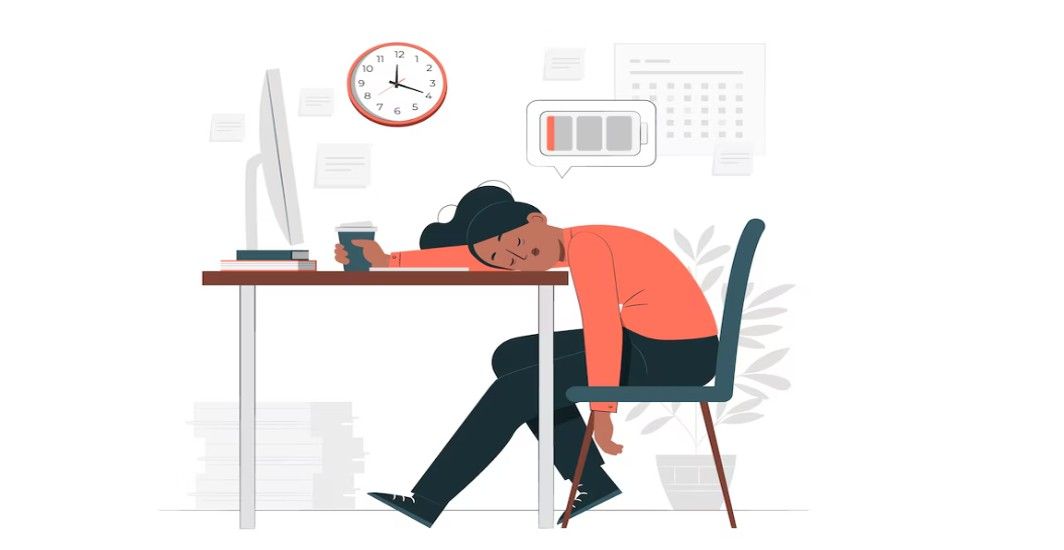Diabetes Management
Understanding the Connection: Diabetes, Iron Deficiency and Fatigue
1 min read
By Apollo 24|7, Published on - 22 April 2024
Share this article
0
0 like

When two health conditions overlap, it can make managing them more complex. This is particularly true for individuals living with diabetes who also have an iron deficiency, leading to what's known as iron deficiency anaemia (IDA). Both conditions, separately, can be challenging; together, they present unique hurdles.
The Prevalence of IDA in Diabetic Individuals
IDA is a major global health issue that primarily affects pregnant women and children but is also notably prevalent among diabetic individuals. It poses a challenge to glucose regulation and glycemic control, ultimately affecting the overall management of diabetes. IDA in diabetics can also lead to an increase in another condition known as 'anaemia of chronic disease', where iron is stored away in White blood cells.
Symptoms and Complications of IDA
The most common symptom of iron deficiency is fatigue due to a lack of oxygen reaching tissues, depriving them of energy. Additional symptoms can include cold hands and feet, frequent infections, poor appetite, and unusual cravings. If left untreated over a long period of time, IDA can lead to severe complications such as depression, pregnancy-related issues, and heart problems.
Treatment Approaches for IDA
If you suspect you have symptoms of IDA, it's essential to seek medical intervention and inform your doctor about your diabetic condition as well. Treatment options often involve boosting iron intake through diet or supplements. Severe anaemia may necessitate a blood transfusion.
IDA is a common issue amongst individuals living with diabetes and has the potential to disrupt glucose homeostasis and negatively affect glycemic control. Hence, recognizing the symptoms of iron deficiency and seeking timely medical intervention is vital.
Diabetes Management
Consult Top Diabetologists
View AllLeave Comment
Recommended for you

Diabetes Management
Mastering Diabetes Management During Social Gatherings and Festivities
Managing diabetes during social gatherings and holiday festivities can be challenging but achievable with the right strategies. These include maintaining consistent meal timings, balancing your plate with the right foods, staying active, enjoying moderation, checking blood sugar frequently, staying hydrated, and educating family and friends about your condition. These strategies can help you enjoy social events while effectively managing your diabetes.

Diabetes Management
Can Diabetes Cause Blurry Vision?
Diabetes and blurry vision are closely linked, as high blood sugar levels can affect the eye's lens shape and fluid balance, resulting in vision problems. Conditions like diabetic retinopathy, macular edema, glaucoma, and cataracts can lead to blurry vision in diabetics. Early detection through regular eye exams is vital to prevent complications. Managing blood sugar levels, adopting a healthy lifestyle, and taking prescribed medications are key to preventing and treating diabetic eye problems.

Diabetes Management
Why is it Important to Maintain Blood Sugar within Range?
A blood sugar level of 98 mg/dL falls within the normal range, signifying effective glucose regulation and metabolic stability. Regular monitoring and healthcare provider consultation offer a comprehensive understanding of metabolic health. While a consistent reading of 98 mg/dL is generally positive, individual health factors should be considered for accurate assessment.
Subscribe
Sign up for our free Health Library Daily Newsletter
Get doctor-approved health tips, news, and more.
Visual Stories

8 Fruits That are Incredibly Healthy for Diabetes
Tap to continue exploring
Recommended for you

Diabetes Management
Mastering Diabetes Management During Social Gatherings and Festivities
Managing diabetes during social gatherings and holiday festivities can be challenging but achievable with the right strategies. These include maintaining consistent meal timings, balancing your plate with the right foods, staying active, enjoying moderation, checking blood sugar frequently, staying hydrated, and educating family and friends about your condition. These strategies can help you enjoy social events while effectively managing your diabetes.

Diabetes Management
Can Diabetes Cause Blurry Vision?
Diabetes and blurry vision are closely linked, as high blood sugar levels can affect the eye's lens shape and fluid balance, resulting in vision problems. Conditions like diabetic retinopathy, macular edema, glaucoma, and cataracts can lead to blurry vision in diabetics. Early detection through regular eye exams is vital to prevent complications. Managing blood sugar levels, adopting a healthy lifestyle, and taking prescribed medications are key to preventing and treating diabetic eye problems.

Diabetes Management
Why is it Important to Maintain Blood Sugar within Range?
A blood sugar level of 98 mg/dL falls within the normal range, signifying effective glucose regulation and metabolic stability. Regular monitoring and healthcare provider consultation offer a comprehensive understanding of metabolic health. While a consistent reading of 98 mg/dL is generally positive, individual health factors should be considered for accurate assessment.


